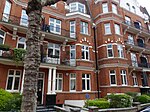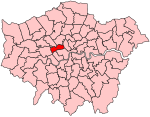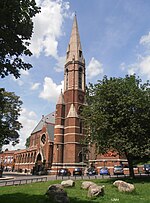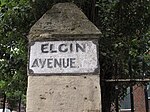Sutherland Avenue

Sutherland Avenue is a street in Maida Vale in London, England. Located in the City of Westminster on the northern edge of Little Venice. it is an avenue running east to west from the Edgware Road to Harrow Road. Along the route it is crossed or joined by Randolph Avenue, Warrington Crescent, Lauderdale Road, Castellian Road, Warwick Avenue and Shirland Road. Elgin Avenue runs directly parallel to the north. In common with much of the area, the street design was laid out by the architect George Gutch in the Regency era and built during the following decades. The builder Hugh Biers played a role in developing the new wealthy residential street. Originally it was two distinct roads Stranraer Place and Sutherland Gardens which were combined in 1887 to create the single Sutherland Avenue.Like much of the surrounding area, it had a considerable Jewish population by the late Victorian era which was served by the Synagogue in neighbouring Lauderdale Road from 1896. The Greek poet Andreas Kalvos lived in the street in the nineteenth century and is now commemorated by a blue plaque. The film director Val Guest was born in the street. The poet Eddie Linden published the poetry magazine, Aquarius, from his flat on the street.
Excerpt from the Wikipedia article Sutherland Avenue (License: CC BY-SA 3.0, Authors, Images).Sutherland Avenue
Sutherland Avenue, London Maida Vale
Geographical coordinates (GPS) Address Nearby Places Show on map
Geographical coordinates (GPS)
| Latitude | Longitude |
|---|---|
| N 51.52539 ° | E -0.18813 ° |
Address
Sutherland Avenue 114
W9 2QP London, Maida Vale
England, United Kingdom
Open on Google Maps









